Believe it or not, the cloud war between AWS and Google Cloud is intensifying in 2025 with shockwaves that could reshape the digital world. Companies are making unexpected moves.
In a world where cloud computing reigns supreme, understanding which platform reigns supreme is crucial for success. Now more than ever, the battle between AWS and Google Cloud is heating up, and you're about to discover why.
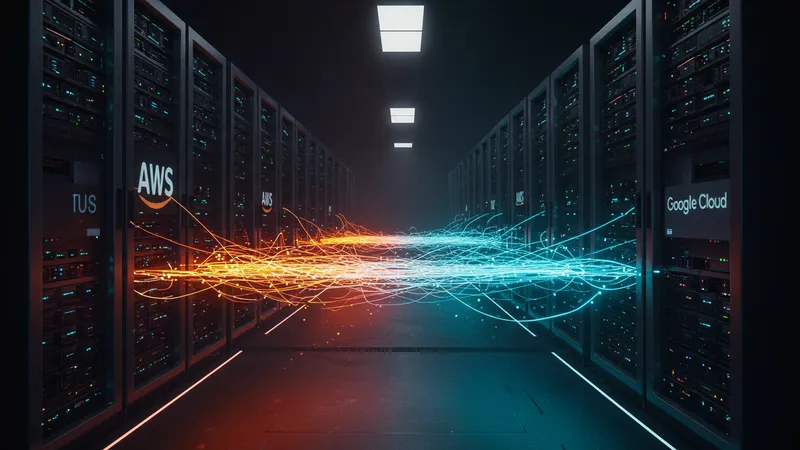
Contrary to popular belief, Google's secret army of AI-driven tools is increasingly outpacing AWS in certain areas. With advancements unseen in the public eye, Google Cloud's AI can now predict business trends with eerie precision. This competitive edge is shifting tech strategies across industries like never before. But that’s not even the wildest part…
AWS, on the other hand, remains the colossus no one dares to topple easily. Fueled by sheer scale and a versatile ecosystem, AWS hosts the infrastructures of major corporations. Its reliability acts as an unbreakable shield for enterprises worldwide. Yet, AWS's approach is undergoing unprecedented changes. What’s happening behind closed doors might just redefine cloud services forever. But there’s more to the story…
The next revelation shook even industry stalwarts and experts. As AWS continues to innovate and Google Cloud races ahead with novel technology, a question lingers—what does the future hold for these tech giants and for businesses relying on their platforms? What happens next shocked even the experts…
Data privacy has become the battleground where AWS and Google Cloud face off with notable zeal. Google Cloud is pushing boundaries in this area, offering groundbreaking solutions like Confidential VMs that maintain encryption even while processing. While privacy was once an afterthought in cloud services, it’s now a crucial factor in IT decision-making. But there's one more twist…
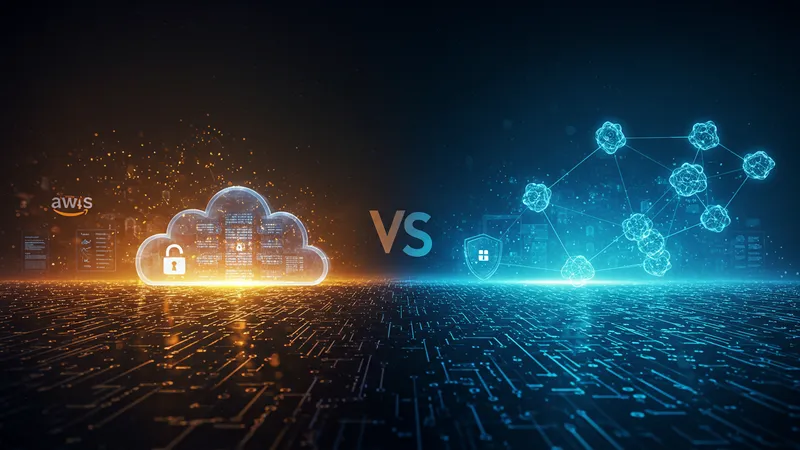
AWS isn't backing down and has taken bold steps to align its services with stringent data governance standards. With AWS PrivateLink, they've connected virtually every service privately, keeping customer data secure from both hackers and hyperscalers alike. As regulations tighten worldwide, these measures are not just perks; they’re the new baselines. Yet, this isn’t where the surprises end…
The implications of choosing the wrong cloud provider concerning privacy are massive. Enterprises are now reassessing years-long partnerships and contracts to avoid potential breaches. This step is as foundational as choosing the right strategic partner. But despite these precautions, the landscape remains treacherous. Keep reading to unveil the unseen risks…
Decisions eek with consequences that could pivot entire operations. As Google Cloud intensifies its focus on encrypted computing and AWS scales its security measures, one must wonder—what lies at the heart of these advancements? Prepare to learn about hidden vulnerabilities no one dares to mention. What you read next might change how you see this forever.
The pricing models of AWS and Google Cloud aren't just competitive; they're aggressively disruptive. AWS has famously lured businesses with a pay-as-you-go structure, but Google's competitive pricing is turning heads by offering unexpected discounts. Google’s sustained-usage discounts offer real savings for long-term users. But can this alone tilt the scales of choice?
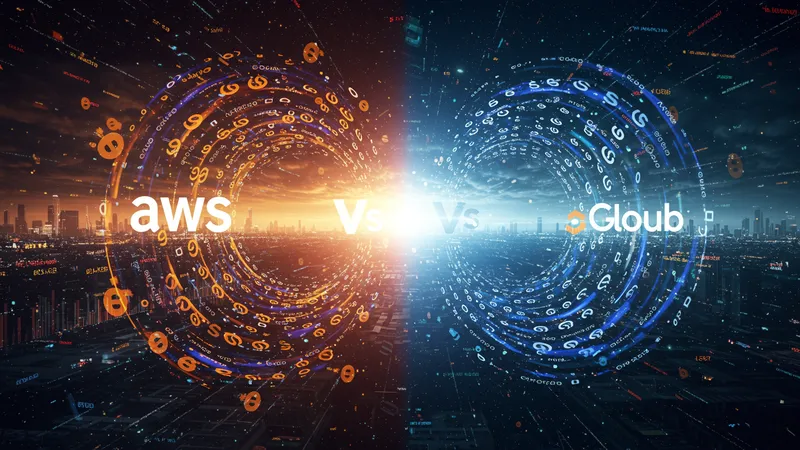
Conversely, AWS’s Reserved Instances provide irresistible cost savings for committed customers, coupled with a sprawling portfolio of services unmatched in the industry. As corporations crunch numbers, trying to balance capability with cost, the choice between these two giants impacts the bottom line. Yet, choosing isn't simple—uncover the complexities ahead…
Hidden fees and surcharges could erode expected savings, turning a seemingly lucrative contract into a financial sinkhole. AWS's extensive billing options have been criticized for their complexity, whereas Google’s approach to transparency is a breath of fresh air. Even seasoned IT professionals can stumble in this financial labyrinth. Could this behavior spell unforeseen budgetary disruptions?
This pricing rivalry extends beyond mere expenses; it affects scalability. With cost efficiency as a priority, many enterprises find themselves at a crossroads, unsure which way to shift. But the deeper question remains: as both providers continue to revise rates, which choice dictates sustainable growth? What follows might alter the fiscal realities of cloud strategies forever.
AWS and Google Cloud are in a relentless sprint to out-innovate one another. Google Cloud is focusing heavily on AI and machine learning, breaking barriers with its Vertex AI platform. This has become the cornerstone of many startups and established tech firms. However, success stories reveal both triumphs and travails. There’s more to explore…

AWS is not one to be left behind. Spearheading new initiatives in serverless computing, they’ve introduced AWS Lambda, allowing businesses unparalleled flexibility and efficiency. Competing in services that practically define the future of technology, AWS remains vigilant. But is staying ahead of the curve enough? Discover the nuances in this technological duel…
The speed of cloud innovation creates challenges as it accelerates the pace of adaptation required from users. Quickly rolled out features might lack the robustness promised. As companies scramble to harness these developments, they may find themselves at odds, struggling to keep up. What goes beyond the buzzwords might surprise you greatly...
Understanding and selecting the right platforms hold untapped potential while exposing hidden weaknesses. This requires unprecedented foresight and a bit of audacity. With AWS and Google Cloud advancing at breakneck speed, who will have the upper hand in strategically crucial innovations? The next chapter could redefine your tech roadmap with revelations you won’t expect.
In 2025, cloud market shares are witnessing a surprising reshuffle as businesses rethink their preferred platforms. AWS, once the unchallenged leader, sees growing competition from Google Cloud, which is tapping into sectors traditionally dominated by AWS. The ensuing race causes seismic shifts. More about this unexpected rivalry awaits…
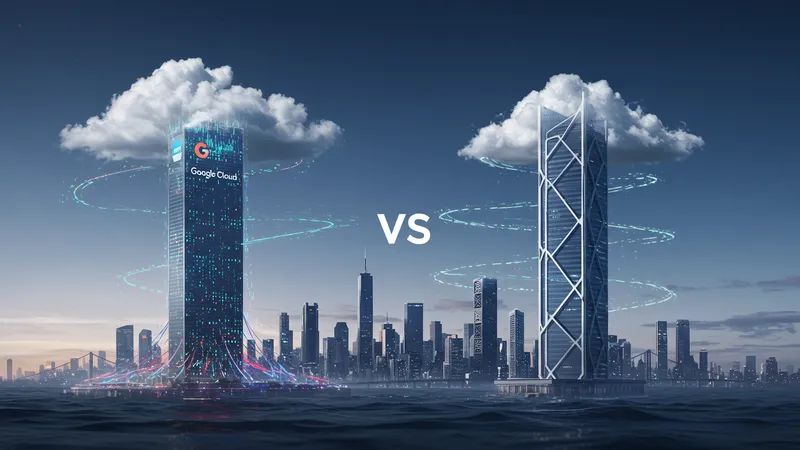
Google Cloud’s relentless agility in product development, paired with its ability to offer strategic partnerships, is appealing to previously untapped sectors. Meanwhile, AWS continues to ensure stability and trust among its base in established industries like finance and healthcare. This scenario begs the question: how much diversity is too much?
It’s not just about market dominance but the strategic focus on expansion. AWS's stronghold on complex industries is up against Google Cloud’s focus on startups and smaller businesses, anticipating future loyalty and market retention. The strategies diverge, but what does it mean for enterprises when the dust finally settles?
This emerging landscape calls for a thorough analysis, examining the intricate balance of service evolution and customer satisfaction. Growth strategies are rapidly transforming and projecting the future path of loyalty, contracts, and contracts laid in the delicate balance between powerhouses. The revenue charts could tilt or surprise at any moment.
Amidst the technological tug-of-war, environmental concerns have surged to the forefront. Both AWS and Google Cloud strive to reduce their environmental footprint, yet their approaches reveal contrasting strategies. Google Cloud continues leading the way as the largest corporate purchaser of renewable energy. But is there more beneath this eco-friendly façade?

AWS is aggressively pursuing sustainability with projects like the Carbon Footprint Tool. They’ve announced their goals to become water positive by 2030—a bold commitment in increasingly eco-conscious times. Corporations now prioritize partners who demonstrate environmental responsibility. Could AWS’s endeavors redefine it as an environmental steward?
Debates underscore the effectiveness of these green strategies. Are these initiatives actual change or clever marketing? What's certain is the pressure for genuine ecological impact is at an all-time high. Enterprises making cloud transitions factor these into long-term decisions. However, diving deeper raises questions you didn’t expect…
Choices are about more than service ratings now. Businesses face an intangible but powerful narrative of environmental sustainability. As AWS and Google Cloud push for eco-conscious accomplishments, the decision to align with either might redefine reputations, partnerships, and global sustainability perspectives. What happens next could stun industry observers.
Performance capabilities are critical in this high-stakes game, drawing sharp lines between AWS and Google Cloud. Google’s custom TPU chips have cut runtime in experiments by half, a jaw-dropping feat. Such performance advancements are game-changers, reshaping computational possibilities. But can AWS breach this formidable lead?
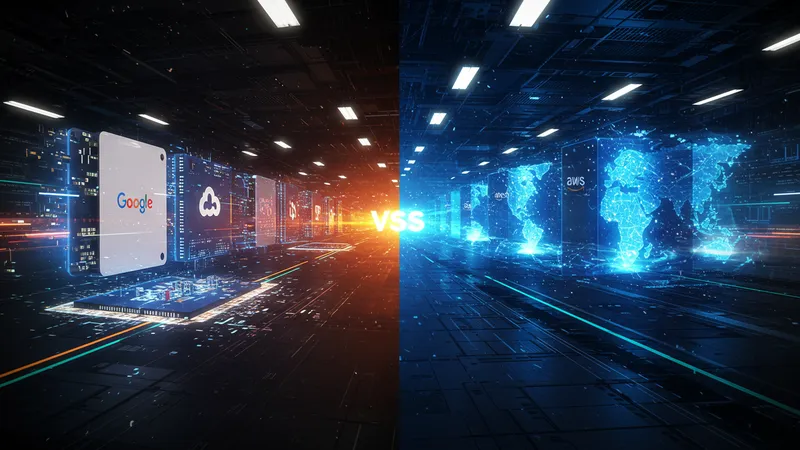
AWS, known for its blazing fast speeds, boasts performance solutions like EC2 instances, catering to globally diverse user demands. With a robust infrastructure and multi-region deployments, AWS’s performance propels businesses into staggering efficiencies. This raises the stakes—can it sustain this momentum?
Enterprises are measuring performance on metrics like latency, throughput, and processing speed, vital for seamless operations. As the cloud giants push limits, it's clear minor performance tweaks could escalate into revolutionary gains. Uncover the greater impact of another perspective…
This competition for performance supremacy holds profound implications for how digital infrastructure is architected. By unlocking new potential, cloud platforms could dramatically shift our approach to interconnected digital ecosystems. Could this race be more game-changing than we conceived?
With rising cyber threats, security remains at the heart of cloud strategy. AWS and Google Cloud engage in ceaseless innovation to ensure their platform's safety. Security services like Google Cloud’s advanced threat detection are redefining best practices. Are these developments as foolproof as they seem?

AWS's Zero Trust approach signals an era where no one—inside or out—is inherently trusted. By instituting multifaceted security layers, AWS boasts immense resilience against breaches. Yet, as the landscape evolves, safeguarding sensitive data challenges all assumptions. Should users brace for more?
The realities of cloud security are complex, guiding vendors to move from traditional to advanced security paradigms. With innovative solutions empowering digital fortress building, understanding potential security vulnerabilities is crucial. Security breaches could undo years of technological progress. The narrative shifts as these realities unfold…
This continuous evolution of security infrastructure prompts introspection about ongoing preparedness. While AWS and Google Cloud build their fortresses, clients must re-evaluate security postures in light of advanced threats. The shifting sands of safety and vigilance are changing industry operations profoundly.
The juxtaposition of innovation with compliance breeds an unprecedented dilemma in the cloud realm. Both AWS and Google Cloud meticulously expand their compliance certifications, aligning with dynamic regulatory mandates worldwide. Navigating the sea of compliance delivers both assurance and anxiety. What might you have missed?
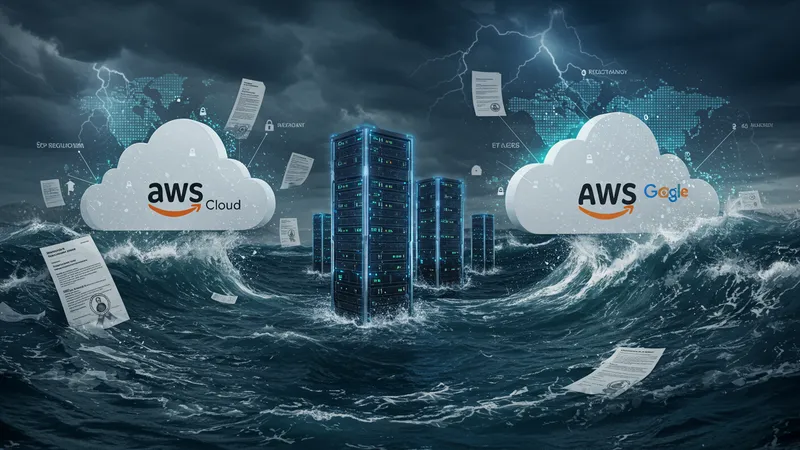
As regional regulations become increasingly intricate, players like Google Cloud delve deeper into solutions tailored for specific compliance needs, offering advanced governance platforms. AWS, however, excels in providing comprehensive compliance toolkits to help enterprises adapt swiftly. Questions arise—could these become too complex to manage?
Organizations are compelled to develop robust governance strategies that align with evolving cloud compliance standards. With regulatory landscapes continually shifting, staying ahead becomes an arduous task. How do enterprises balance innovation with compliance when both are non-negotiable priorities?
Exploring compliance intricacies raises critical concerns about flexibility and preparedness, prompting decision-makers to allocate resources judiciously. The fine print demands careful reading, but the price of oversight remains immense. The future of cloud governance could redefine operational paradigms as boundaries blur and merge.
The world's thirst for innovation demands a global cloud presence, an area where AWS and Google Cloud engage fiercely. AWS boasts 25 regions, enhancing network performance across continents. This global footprint fosters rapid expansion. What’s hidden within this extensive network?
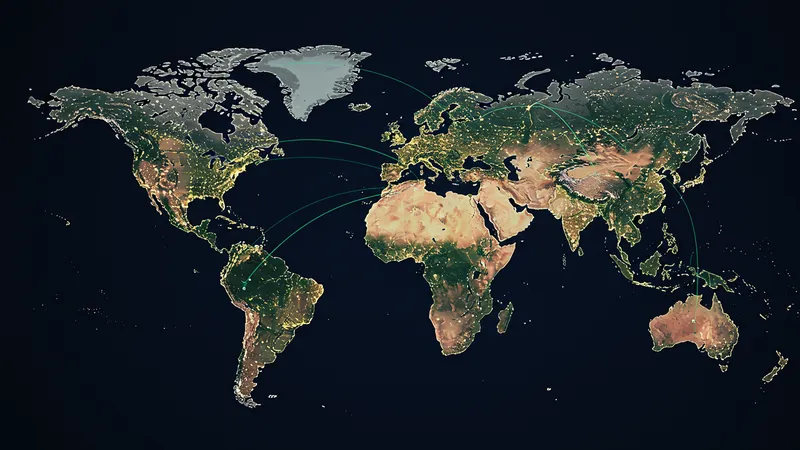
Google Cloud counters with strategic data center placements, capitalizing on presence in over 35 global regions to optimize latency and availability. Their infrastructure is key to rapid response capabilities internationally. But is infrastructure alone sufficient for seamless global operations?
Regional presence does more than reduce latency; it instigates partnerships, evermore crucial in today’s connected age. Whether AWS’s breadth or Google’s precision, the implications streamline global endeavors. Undisclosed barriers remain as territorial expansion ventures forward.
Rethinking the definition of regional availability challenges preconceptions about accessible, scalable cloud potential. These giants’ global ambitions cast light on prospective strategies and territorial alignments, redrawing the map in ways few anticipated. Could expansion redefine power dynamics altogether?
No longer confined to merely traditional sectors, AWS and Google Cloud spearhead initiatives in novel arenas like digital health or autonomous vehicles. AWS has introduced health-centric innovations, supporting breakthroughs in patient data management. Google Cloud, meanwhile, infiltrates the edge computing space—transformational for AI deployment. Explore the breadth of this innovation-driven era.
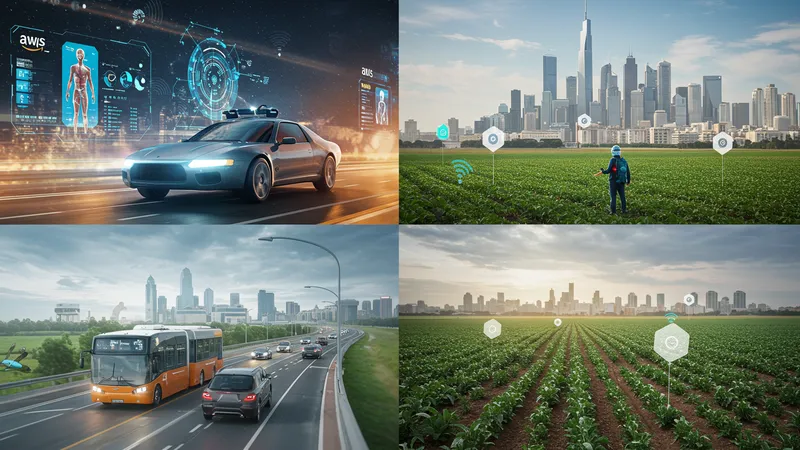
This dawn of tech transcendence upends familiar domains; projects like AWS's foray into agriculture, utilizing sensor technology for predictive analytics, demonstrate cloud utility beyond imagination. Likewise, Google Cloud’s impact on gaming creates real-time, cross-platform solutions that redefine interactions. How does this shift fundamentally alter industry landscapes?
Sudden paradigm shifts highlight the continuous growth and influence of cloud platforms across unforeseen fields. Beyond known technical disparities, the extensive applicability of cloud technology disrupts traditional methodologies. Unanticipated foreseeable consequences impact broader industries. But what remains unexplored in these ventures?
Unveiling multifaceted impacts traversing various domains calls for re-evaluation of strategic alignments with cloud providers. Today’s innovation spills into tomorrow’s traditional sectors, demanding agile adaptation and strategic reevaluation of partnership dynamics. Unexpected applications redefine future market paths with implications yet to fully manifest.
Across the digital landscape, the escalating tension between AWS and Google Cloud elicits fierce debates. Their relentless competition sparks unprecedented tech innovations, redraws industry standards, and forces businesses to reassess cloud allegiances. Witnessing this transformational saga makes one thing certain: no rulebook dictates our cloud-shaped destinies.
Deciding between AWS and Google Cloud in 2025 isn’t merely a technological choice—it's a strategic prophecy for any enterprise daring enough to embrace tomorrow. As this epic tale unfolds, stay engaged—and activated. Share these revelations, study the trends, and arm your ventures with informed choices. The cloud wars have only just begun!